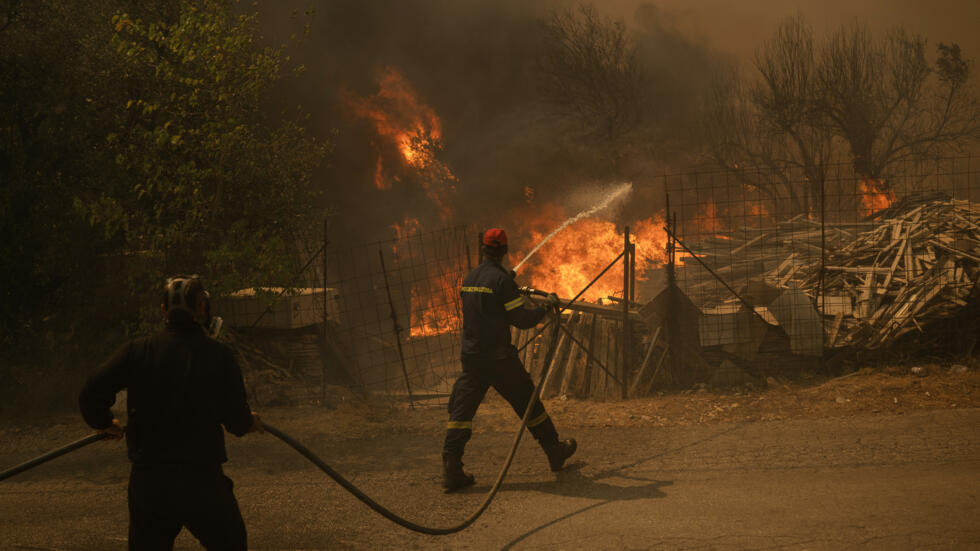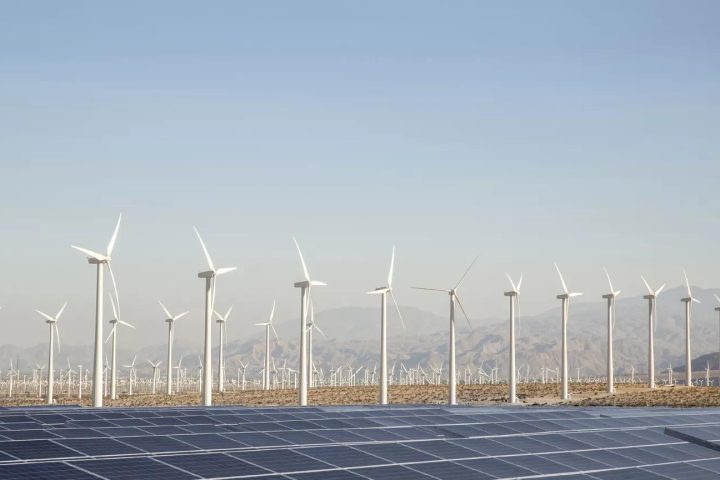Wildfires have rapidly become a global front-burner issue as the scale of destruction, evacuations, and environmental damage continues to escalate. In 2024, relentless blazes are ravaging expansive forests in North America, scorching Europe’s Mediterranean landscapes, and sweeping through vast areas in Australia and the Amazon rainforest in Brazil. Firefighters across these regions are battling to contain the flames, but the situation is becoming increasingly dire.
According to the European Forest Fire Information System (EFFIS), climate change is significantly amplifying the global wildfire crisis and is seen as the biggest driver of these disasters. Rising global temperatures are disrupting the earth’s water cycle, leading to more extreme weather patterns. As the atmosphere warms, more water evaporates, causing wetter regions to experience increased rainfall and storms, while already dry areas become even drier. This shift creates ideal conditions for wildfires to ignite and spread.
Join our WhatsApp ChannelDrought conditions are particularly hazardous, drying out trees and plants, providing ample fuel for wildfires. Low humidity further exacerbates the situation, accelerating the drying process and significantly heightening the risk of large-scale fires. While natural factors play a crucial role, human activities, including arson, also contribute to the rapid spread of these blazes.
Globally, more than two-thirds of the wildfires that occurred from 2001 to 2018 were in Africa, with the largest areas burned (exceeding 500 million hectares) located in Eastern and Southern Africa, Western and Central Africa, Oceania (mainly Australia), Northern Africa, and South America, according to a report by the United Nations Forum on Forests Secretariat, United Nations Department of Economic and Social Affairs.
The statistics from 2023 underscore the severity of the situation. 2023 is the deadliest year for wildfires in this century. In Europe, wildfires burned through 988,420 acres, with Greece, Spain, and Italy among the hardest-hit countries. In Australia, the fires ravaged more than 150 million acres across Queensland, New South Wales, Victoria, and other regions. Canada experienced one of its worst wildfire seasons on record, with more than 42 million acres consumed by more than 6,132 wildfires—more than double the previous record—costing the Canadian government close to $10 billion. Meanwhile, in the United States, 55,571 fires charred more than 2 million acres. In 2023, wildfires generated approximately 2,170 megatons of carbon emissions, with the Canadian wildfires accounting for 22% of this total, according to data from the European Copernicus Atmosphere Monitoring Service (CAMS).
As we move further into 2024, the wildfires show no sign of abating, with North America and Europe once again suffering the most.
North America
The 2024 wildfire season in North America has been severe, with numerous large-scale fires consuming vast areas across the continent. Both Canada and the United States have experienced particularly devastating outbreaks, leading to a national preparedness level of 5 for both countries—the highest level, indicating that “national resources are heavily committed, and additional measures are taken to support geographic areas,” according to the U.S. National Interagency Fire Center (NIFC).
As of 12 August 2024, NIFC statistics reveal that 29,132 fires have burned more than 2 million acres of land across the United States. Firefighters are currently battling 78 large fires spanning Arizona, California, Oregon, Idaho, and seven other states, all of which are grappling with record-breaking heat waves. Arizona has seen particularly severe wildfires, with more than 200,000 acres burned in 2024 alone—significantly more than the 100,000 to 150,000 acres burned in 2023 and 2022. California, a state all too familiar with wildfires, has recorded 4,854 wildfires as of 5 August with nearly 780,000 acres scorched—29 times higher than in 2023, according to the California Department of Forestry and Fire Protection (Cal Fire).
Canada
North of the border, Canada’s wildfire season in 2024 has been equally catastrophic, ranking as the fourth most destructive on record. As of early August, over 3 million hectares of land have been scorched by approximately 4,600 wildfires, with the situation continuing to evolve. British Columbia has been the hardest hit, with around 150 out-of-control wildfires ravaging the province. Alberta, Saskatchewan, and Quebec are also battling extensive wildfires, contributing to the widespread devastation. In Canada, a large percentage of wildfires are sparked by lightning, further complicating efforts to control them. Scientists have warned that the 2024 wildfire season could last well into September, an anomaly given that the wildfire season in Canada typically concludes by the end of August.
Europe
Across the Atlantic, Europe is facing its own wildfire crisis, with Greece and Italy among the hardest-hit nations. Fueled by soaring temperatures and dry conditions, these wildfires have devastated landscapes, threatened communities, and put immense pressure on emergency services. Greece has endured an exceptionally hot and dry summer in 2024, with successive heatwaves in June and July marking the hottest months on record. The relentless heat transformed vast areas of the Mediterranean country into a tinderbox, setting the stage for the worst wildfire the nation has seen in over a decade, according to The Guardian UK. A wildfire that broke out in the rural areas surrounding Athens on Sunday, 11 August, burned through thousands of hectares, forcing evacuations and threatening homes within 24 hours. The scale of the blaze prompted the Greek government to seek assistance from the European Union and Turkey.
READ ALSO: Drawing A Line In The Sand As Communities Adapt To Climate Change
According to Greece’s National Observatory, satellite images revealed that the fire damaged around 10,000 hectares (24,700 acres) of land. The scope of the destruction underscores the growing threat of wildfires in Greece, which has already seen 137 VIIRS (Visible Infrared Imaging Radiometer Suite) fire alerts in 2024, based on high-confidence alerts. This is a stark reminder of the increasing frequency of such disasters, with 2023 holding the record for the most fires recorded in a single year at 1,150.
Financial Toll
The financial toll of these fires is staggering. Wildfire suppression costs the world more than $50 billion annually, according to the World Economic Forum. Over the last decade, wildfire suppression has cost the U.S. Department of Agriculture’s Forest Service and the Department of the Interior an average of more than $3 billion per year. This figure underscores the immense challenge of combating these increasingly frequent and severe blazes. The financial impact on Canada is equally severe. In 2023, wildfires caused the Canadian government to lose close to $10 billion. The ongoing fires in 2024 are likely to push these losses even higher, as the country struggles to contain the flames and mitigate their far-reaching consequences. In Europe, the situation is similar, with an estimated €4.1 billion ($4.43 billion) spent on wildfires, according to a report from Distrelec, a major distributor of power sector components, including sensors that provide early warnings of potential wildfire activity. South America and Australia have also incurred billions in terms of property destroyed and fire management costs.
Health Impact
The health impact of wildfires is also severe. It is estimated that globally, wildfire-induced air pollution is associated with 340,000 premature deaths from respiratory and cardiovascular issues. Smoke reduces air quality and can cause eye and respiratory illnesses, especially among children and the elderly. Wildfires that burn in residential areas can melt plastic water pipes, causing contamination of water systems with carcinogens.
Wildfires also drive hunger as global heating devastates agriculture in both the short-term and long-term. Frequent and intense climate-related disasters wipe out vast stretches of farmland and destroy entire harvests, leading to increased hunger as people lose access to food. Over time, wildfires and other disasters degrade soil, making farmland barren and reducing both the amount and quality of food that can be grown, according to the World Food Programme.
Global Response
Reducing and preventing wildfires is a global challenge that requires coordinated efforts across multiple levels, including government policies, community involvement, and technological advancements. Addressing climate change is critical in reducing wildfires, as rising temperatures, prolonged droughts, and extreme weather conditions significantly increase fire risks. By cutting greenhouse gas emissions and investing in climate-resilient infrastructure, we can mitigate these contributing factors.
Juliette Biao Koudenoukpo, Director of the United Nations Forum on Forests Secretariat, wrote in a report that applying scientific knowledge can enhance early warning systems by leveraging advanced technologies and implementing science-driven landscape and forest management approaches. Increased use of modern tools for monitoring, detecting, and controlling fires, such as remote sensing and real-time alert systems, is crucial in this effort.
She also emphasized that the active involvement of all stakeholders is essential for successfully implementing wildfire management strategies. Engaging Indigenous peoples, local communities, scientific experts, and the private sector is particularly important, as incorporating traditional knowledge and wildfire practices can greatly benefit these strategies.
Lastly, international cooperation is key to achieving coordinated global efforts to reduce wildfires. Collaborative initiatives, increased funding for fire management, and ongoing research into fire-resistant materials and predictive modeling are vital to addressing this escalating challenge.
Wildfires are upon us, no matter the continent. Something must be done to curb this inferno. While completely eliminating wildfires is not possible, we can take significant steps to manage and reduce the associated risks. Inaction at this stage would endanger the achievement of the Global Forest Goals, Sustainable Development Goals (SDGs), the Paris Agreement on climate change, and other key development objectives. Let all hands be on deck across the board to reduce the effects of climate change.


















Follow Us